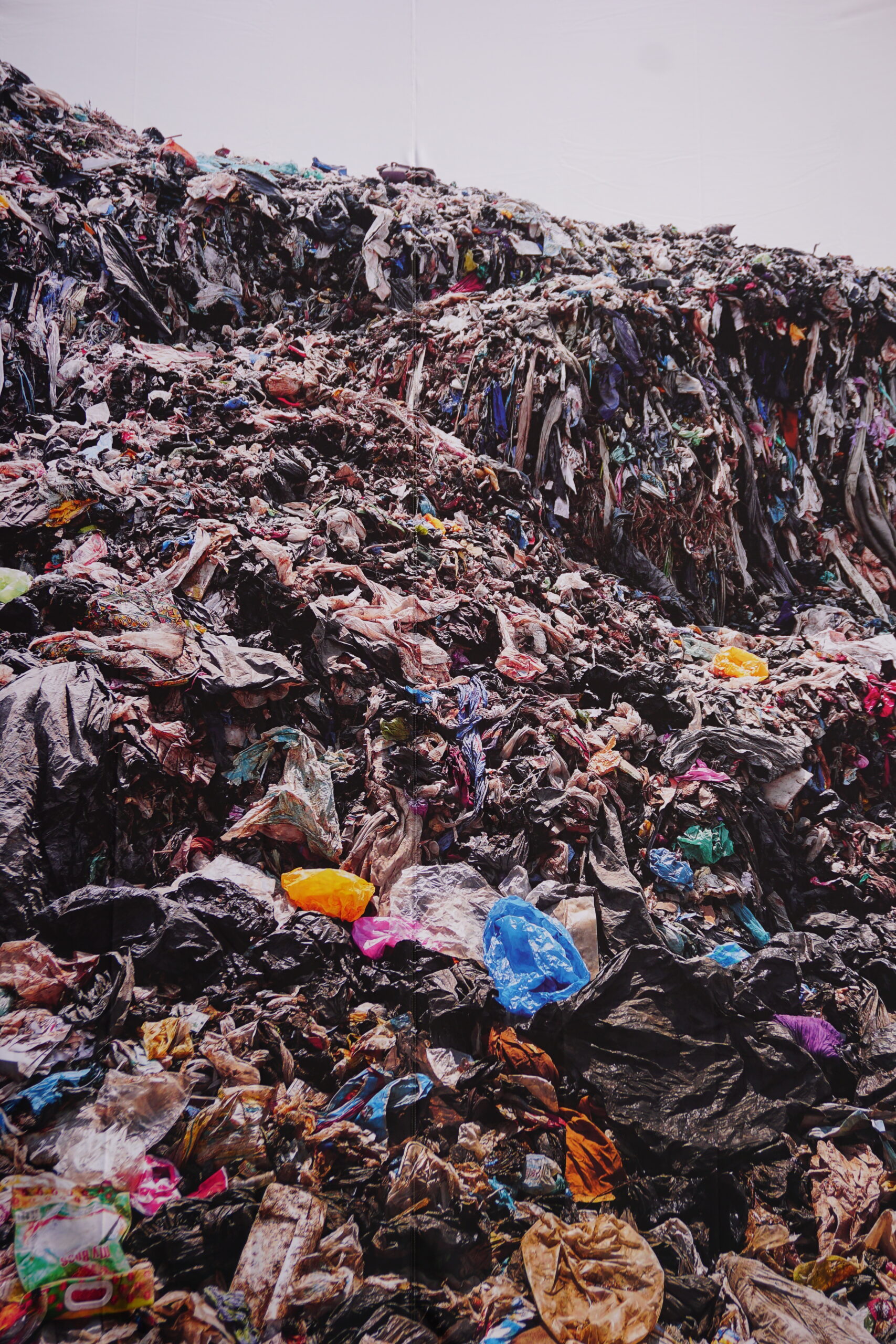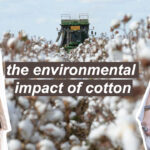Donating clothes we don’t wear anymore has for many consumers become a way of simply making room for new clothing. According to a British study, we only wear 44% of the clothing we own, while we’re buying more clothes than ever. But donating clothes to charity is a way of making sure that our unwanted clothes get a new home, right? Right???
The supply chains of thrift stores and the hierarchy of which clothes end up is often a little bit more complex than simply donating something to a shop to have it resold in said shop. Actually, only 10-30% of second-hand donations are actually resold in-store.
also check out: THE IMPACT OF POLYESTER // how we ended up dressing in plastic
So what happens to the rest of the donations? When donating clothes to charities we send the clothes through a long supply chain. If you donate something to a charity shop in Europe, the clothes will be graded and sorted. The best pieces will be sold in the UK, Germany, Sweden, Denmark, France, etc. while the clothes of lesser quality will continue through the supply chain to shops in Poland, Greece, Latvia, Hungary, and Romania etc. Commercial partners of charity shops decide what can be sold in a specific country, and the rest passes on. Until it reaches its final destination in the Global South.
In Germany alone, about 1 million tonnes of used clothes are collected every year. Since the middle of the 1990s, the volume of clothes collected every year has grown by 20% and keeps growing along with the ever-increasing speed of fast fashion.

When consumers learn that the unwanted clothes of Europe make their way to Ghana, Kenya, Mozambique, etc. it’s often seen as a noble and good deed. However, the reality is that the clothes that are left have been deemed unsellable over and over again, so the remains that end up in the Global South is more often than not a method of glorified trash disposal. A lot of it is completely unwearable, but it’s passing from country to country as country after country refuses to be the ones that pay for the disposal, better send it on. The system that was built to sort and redistribute these clothes was not built for the massive onslaught of fast fashion that we are seeing today, so there is not the proper infrastructure in place to handle these amounts of textile waste. That’s true for most countries today, also in richer economies, which is why so many clothing collection and recycling schemes are scams, but it is especially so true for the Global South where the vast majority of your textile trash ends up.
62 million tons of clothing are manufactured worldwide every year, which adds up to about 80-150 billion pieces of clothing. The fast-paced trends of the fashion industry, along with the poor quality with which many clothes are made today have resulted in consumers looking to donations as another form of “away”. Donating is *technically* not the same as throwing the clothes straight into the bin, but in many cases, the result is just the same, we just feel a tad bit better about it.
also check out: THE IMPACT OF FAST FASHION // watch this before buying new clothes
The vast amount of cheap used clothes from rich economies in Europe is flooding countless communities in Africa, and while I am all for reuse, recycle, and re-wear, this is not without harm to these communities.
Several communities that manage these discarded clothes were built on trading donations, used to earn money from reselling the good quality clothes, even discarded, or outdated designer items, however, the vast majority of good quality clothing has been removed from the bundle many charity shops collection centers ago, leaving only leftovers with no reselling value, meaning that a lot of people struggle with debt in this business today.
Local textile manufacturing sectors have collapsed, along with long lines of textile craftsmanship. Between 1975 and 2000 the number of people working in the textile trade in Ghana fell by 75%, note that these were the same formative years that we talked about in the video about polyester and the rise of fast fashion, so these two events are consequently interlinked.
also check out: SHEIN IS MUCH WORSE THAN ALL OTHER FAST FASHION BRANDS // here is why
The fast fashion industry and the relationship Western consumers have with their clothes are also vastly different from the tradition of a lot of the African textile trade. As a result, Oliver Franklin-Wallis describes in his book Wasteland that many people in the Global South thought that the donated clothes all came from dead people because that would be the only reason why someone would be giving these clothes away. As such, the donated clothes from Europe are often referred to as “dead white man’s clothes” or “dead European clothes” in the local communities.
According to research from the Or Foundation, about 40% of the clothes that are arriving at Kantomanto, a textile market that is considered a hot spot for fashion trading in Ghana, become waste immediately. Collecting and properly disposing of these massive amounts of textile waste shipped to Ghana, masked as wearable clothes, costs money, which the local businesses do not have, so the textile waste is often left to accumulate in the streets and nearby environment. The clothes also suck up water and dirt in the landfill, creating massive rock-hard blocks of a concrete-like character which makes crushing, sorting, and moving the waste a lot more difficult (Oliver Franklin-Wallis, Wasteland).
Actually, about 73% of clothes end up being burned or buried in landfills, while around 12% are recycled. Every second a garbage truck of clothes ends up in a landfill, despite the fact that 95% of clothes could actually *technically* be recycled. It has the potential to be recycled but isn’t. Because we’re producing too much, the system is overworked, and there isn’t the proper infrastructure, the proper technology, and the proper funding. When fast fashion companies can create 3$ shirts in cotton and polyester, and still make a profit, why would they invest in expensive recycling facilities and innovation? That’s just doing bad business.
also check out: THE ENVIRONMENTAL IMPACT OF COTTON // + is organic cotton ACTUALLY better?
Does this mean that shopping in thrift stores isn’t sustainable or ethical anymore? No, you can absolutely still do that. I encourage it, buying pre-loved and using what is already in the waste stream is a really good idea. Because whenever we buy new things, we create demand. Demand for more stuff to be created, we vote “Yes please more of this” with our money, so new things, especially fashion, should be bought with intention and conscious effort.
But we need to think about how to “dispose” of clothing. Rather than chugging all our unwanted clothes into a bag and dropping them off at a thrift store, we need to mobilize our own community. Give clothes you don’t wear, can’t fit into, or don’t like anymore to friends and family. Have clothing swap parties or events where you can “shop” each other’s wardrobes.
But we also need to talk about the mentality we have towards clothes. Because fashion is seen as a disposable product. Something that is socially acceptable to consider “unwanted” because it doesn’t reflect our style or vibe. Buying fashion items that reflect short-lived trends will leave you with a feeling of constantly falling behind on what is new and hot. But it can also distance you from your wardrobe because none of it reflects who you are, just what you see online. We need to change our perception of what clothing is, as something valuable, which is extremely difficult to do when Shein makes 4$ dresses.
But in our donations to charity, there are things we can do to make sure that we are not overworking the system and tossing last year’s trends in textile graveyards in Africa. Start by only donating clean, intact, and wearable clothes. Clothes that are dirty, destroyed, or worn out will most likely be thrown away. And sadly not in the local bin. Chances are that what you “donated” instead of repurposing or tossing falls will throw a long supply chain simply to become someone else’s program. But when it comes to our planet, nothing is truly ever “away” and nothing is truly ever “only someone else’s problem.
thank you to Fashion Dumpsite for the photos, see more of their work here




